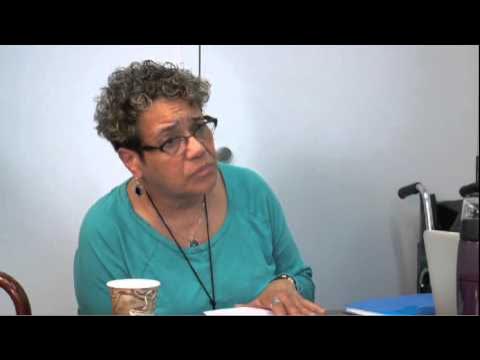Ep 218 | Levels of Dysgraphia (handwriting difficulties) in children | Cheri Dotterer | Reena Singh
Summary
TLDRIn this insightful video, Sherry Dotter, an experienced occupational therapist, discusses her research and strategies for supporting children with dysgraphia. She breaks down the different levels of dysgraphia, focusing on sensory, motor, and cognitive aspects, and emphasizes the importance of targeted support for effective intervention. Sherry shares personal experiences, case studies, and practical techniques, including a unique alphabet system based on body movements to assist with spelling. She also highlights the significance of addressing primitive reflexes and incorporating physical activities like dance and sports to support neurological development, ultimately offering a holistic approach to overcoming writing challenges.
Takeaways
- 😀 Sensory and motor skills are foundational to handwriting development, with sensory development happening first, followed by motor development.
- 😀 Dysgraphia can be categorized into different levels, including sensory, motor, memory, language, and cognitive levels, each impacting handwriting and writing abilities.
- 😀 Visual-spatial dysgraphia relates to the sensory connection between a person’s vision and what they write, while motor dysgraphia involves the physical action of writing.
- 😀 Memory dysgraphia is often linked to emotional memory and affects writing legibility and speed.
- 😀 Language-related difficulties in dysgraphia involve challenges in spelling, word recognition, sentence formation, and understanding parts of speech.
- 😀 An innovative approach to spelling, using body movements to help children understand words like 'enough,' links sensory experiences to learning.
- 😀 Sentence structure challenges are common in children with dysgraphia, as they may struggle to identify and understand parts of speech and syntax.
- 😀 Paragraph formation and essay writing involve integrating all previous levels of development, requiring cognitive engagement and creativity.
- 😀 Behavioral issues in children with dysgraphia are sometimes mistakenly attributed to behavior problems rather than underlying sensory or neurological issues.
- 😀 The right support, including individualized education plans (IEPs) and targeted interventions, can dramatically change a child's educational and home life, reducing negative behaviors and emotional stress.
- 😀 Physical activities such as dance, sports, and swimming help develop gross motor skills, which in turn support fine motor skills needed for writing.
- 😀 Sherry's book, 'Handwriting Brain Body Disconnect,' provides strategies for addressing dysgraphia and offers an understanding of foundational skills and symptoms.
- 😀 Primitive reflexes play a significant role in children with reading and writing disabilities, and addressing these reflexes can aid in overcoming writing challenges.
- 😀 Sherry’s personal experience with dysgraphia, both as a therapist and a parent, highlights the importance of finding and addressing the underlying causes of writing difficulties.
Q & A
What is the foundational framework for understanding dysgraphia in the script?
-The foundational framework is based on three levels: sensory, motor, and language. The sensory level deals with visual and motor connections, the motor level addresses the physical ability to write, and the language level focuses on spelling, sentence formation, and paragraph structure.
How does sensory dysgraphia impact writing?
-Sensory dysgraphia affects a person’s ability to connect visual information with writing. If a child struggles to process what they see on paper, they will have difficulty writing legible text.
What role does motor dysgraphia play in handwriting challenges?
-Motor dysgraphia relates to the difficulty in controlling the movement of the hand while writing. This impacts the ability to physically form letters and words, contributing to illegible handwriting.
What is the 'Body Sentence Alphabet' and how does it help children with dysgraphia?
-The Body Sentence Alphabet is a strategy where the child associates body movements with letters to help with spelling. For example, the letter 'e' corresponds to a specific body part or motion, helping the child visualize the word and its pronunciation.
How does sentence formation contribute to dysgraphia?
-Sentence formation challenges occur when children cannot recognize parts of speech, making it difficult to structure sentences correctly. Without this foundational understanding, they struggle with syntax, which impacts their ability to write coherent paragraphs.
What is the relationship between dysgraphia and cognitive engagement?
-If a child cannot structure sentences correctly, it becomes difficult for them to engage cognitively with the writing process. This makes it harder to compose essays or longer writing tasks, limiting their academic performance.
Can a child with dysgraphia develop their writing skills without mastering foundational levels?
-No, without addressing foundational issues such as sensory processing, motor coordination, and language understanding, a child will struggle with illegible handwriting and basic writing skills. Mastering the foundational levels is critical for developing effective writing abilities.
How does collaboration with behavioral specialists help in managing dysgraphia?
-Collaboration with behavioral specialists helps identify whether a child's challenges are behavioral or sensory-based. Occupational therapists and behavioral specialists can work together to find the root cause of the issues, leading to more effective support strategies.
What is the significance of the story shared about the child in an IEP meeting?
-The story highlights how identifying dysgraphia and providing the right support can completely transform a child's educational experience. By receiving the correct interventions, the child moved from expulsion to successfully integrating into a new school environment with better academic support.
What types of activities are recommended to support children with writing difficulties?
-Activities like word searches, mazes, and other paper-and-pencil tasks are suggested. These activities help build foundational skills for writing without requiring the child to directly write, offering a non-stressful way to practice cognitive and motor skills.
Outlines

This section is available to paid users only. Please upgrade to access this part.
Upgrade NowMindmap

This section is available to paid users only. Please upgrade to access this part.
Upgrade NowKeywords

This section is available to paid users only. Please upgrade to access this part.
Upgrade NowHighlights

This section is available to paid users only. Please upgrade to access this part.
Upgrade NowTranscripts

This section is available to paid users only. Please upgrade to access this part.
Upgrade NowBrowse More Related Video
5.0 / 5 (0 votes)





